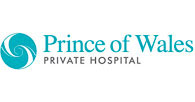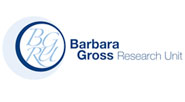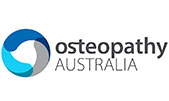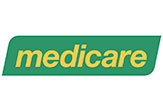









Hormone Replacement Therapy has been used safely in Australia for many years. 2016 saw the Australian release of a safe, easily absorbed HRT provides an exact duplicate of the human hormone progesterone for women with menopausal symptoms.
This simple, safe and effective treatment can help maintain a balanced mood, healthy sex life and sleep patterns during and after menopause. Pharmaceutical grade micronised progesterone is also known as body-identical or micronised progesterone, as it is an exact duplicate of human progesterone. It has been safely and successfully used in Europe for decades and WHRIA is now able to offer this treatment.
Micronised progesterone (mP4) is far more effective at a lower dose with fewer side effects and a reduced risk of breast cancer (than synthetic progestin). It can form a part of an individualized program to effectively treat
WHRIA’s A/Prof John Eden is one of Australia’s few dual-qualified reproductive endocrinologist and gynaecologists. This unique combination of knowledge and experience places him at the forefront of managing women’s hormones, world-wide. He has been safely treating women with PMS, polycystic ovaries, osteoporosis and menopausal symptoms for over 30 years. He would like to encourage women to re-consider safe HRT by learning more about this safe option to restore their quality of life.
Many menopausal women having significant symptoms will prefer body-identical HRT, but there is still a role for the other menopausal therapies.
Fifty years of research has clearly shown that not all HRTs are the same. The Women’s Health Initiative (WHI) Study has shown that CEE-MPA used for more than five years is associated with a slightly increased risk of breast cancer (eight extra cases per 10,000 women per year).3 However, in the WHI Study, oestrogen alone used for ten years did not increase breast cancer risk (and may even lower it). 3
Many menopausal women having severe symptoms want to use ‘natural’ HRT. Transdermal E2 (patch or gel) with body-identical micronised progesterone appears to be a safe and effective therapy for many women. Most women prefer to take mP4 as a 100mg capsule daily (or 200mg cyclically), but for a very small number who can’t take tablets or who have side-effects with oral mP4, then the topical vaginal route is available.
Why Body-Identical HRT is Important
Read more (or download the full article via HealthEd or WHRIA’s Health Information Sheet )
Micronised Progesterone is Now Available in Australia
We have known for fifteen years that HRT that contains a synthetic progestin is linked to a slightly increased risk of breast cancer, if used for more than five years. A recent study (2016) showed that body identical HRT containing natural progesterone was associated with a significantly lower risk of breast cancer than HRT containing progestin.
Thus the recently availability of natural progesterone means that Australian women can have access to a safer form of HRT.
If you have a specific enquiry for our WHRIA specialists
Click HereEven though menopause is a normal physiological condition, for some women the consequences are devastating.
Unfortunately, as a consequence there appears to be a lack of effective management of menopausal symptoms in Australia. Professor Sue Davis’ group in Melbourne1 found severe flushing symptoms in:
They concluded the use of hormone replacement therapy (HRT), vaginal oestrogens and non-hormonal therapies for flushing were
“strikingly low, suggesting that menopause remains an undertreated condition. Many couples are putting up with painful sex, or have given up on sex, despite the fact that topical oestrogens are effective, safe, cheap, and have been available for decades”.
There are long-term consequences of menopause too, especially if menopause occurs early (<40 yo). If untreated there is an increased risk of heart disease, osteoporosis, affective disorders and dementia.2
Don’t All Hormone Replacement Therapies Increase Breast Cancer Risk?
There is much fear around the use of HRT and the risk of breast cancer. This fear started on the 10th of July 2002, when the Women’s Health Initiative (WHI) Study released their preliminary results to the world media. It was stated that there was a 26% increased risk of breast cancer amongst those subjects who took conjugated oestrogens with medroxyprogesterone acetate (CEE-MPA).3 In Australia, the headlines read “Stop your HRT and see your doctor” (e.g. Daily Telegraphy 10th of July, 2002). This was widely (and incorrectly) interpreted by women as stating that HRT usage is linked to a one in four risk of breast cancer.
Unless a person is trained in statistics, percentages are commonly misunderstood.
In fact, the increased risk of breast cancer was only seen after five years of conjugated equine oestrogens (CEE) and medroxyprogesterone acetate (MPA) use and the absolute risk was eight per 10,000 women per year.3 There were also eight other types of cancer prevented by the same HRT, (two fewer endometrial cancers and six fewer bowel cancers per 10,000 women per year), but this was not widely reported.3
There is now a widely held view that all HRT regimens are the same and that all of them increase breast cancer risk. Sadly, women many women do not know that in the same study, those using CEE alone (who had had a hysterectomy) had a significantly decreased risk of breast cancer. Also, it is not well known that other HRTs, such as tibolone, are also associated with a decreased risk of breast cancer (LIFT study).4
If you have a specific enquiry for our WHRIA specialists
Click Here“I Want to Use Natural Hormones”
Over the last few decades, women have expressed an interest in using “natural hormones.” Many are taking hand-made, untested, compounded HRT in the form of troches, creams and pessaries. These products typically contain oestradiol (E2), and other oestrogens, progesterone, DHEA and often other human hormones. These are typically called “bio-identical HRT”. This topic has been reviewed by Cirgliano.5 The lack of quality control and testing has led the International Menopause Society to instruct their members not to use such products.6
In Australia, we have had access to pharmaceutical grade E2 as tablets, patches, gels and vaginal products for decades. Oestriol (E3) is also available as tablets, pessaries and vaginal cream. Testosterone has been available as a cream (Lawley Pharmaceuticals via private script only).
However, until recently, Australian women and their health practitioners have not had access to pharmaceutical-grade progesterone. As such, synthetic progestins have been used to protect the endometrium from the stimulatory effects of E2. They are very effective, but around one woman in eight develops side-effects similar to premenstrual tension, such as mood swings, feeling flat, depression, and bloating. Also, progestins negate or ‘cancel out’ much of the cardiovascular benefits of oestrogens and appear to be the HRT component linked to the slightly increased risk of breast cancer.
Europe, especially France has conducted many large studies on the use of micronised progesterone (mP4) taken orally or vaginally, with E2 tablets, patches or gel. Micronisation is an industrial process that produces a substance which has similar sized very small particles that result in better absorption. In brief, mP4 is superior to progestins in terms of safety profile and side-effects. For the first time in Australia, mP4 is now available as a pharmaceutical product.
We hope this will allow a “re-telling” of the HRT story and permit Australian women and their doctors to have access to tested, safe, effective and truly “natural” HRT.
We have seen this evolution from biologicals / synthetics to the body-identical hormones in other areas of medicine too. Decades ago, insulin was extracted from the pancreases of animals such as cows or pigs. It worked, but there were problems, such as allergic reactions and tolerance. Once human insulins became available, we moved on from using the animal-derived products. Growth hormone and follicle stimulating hormone were also originally extracted from biological sources; now the human hormones are used and they are much safer.
Guidelines for the usage of HRT have changed over the years and recently the International Menopause Society has published an excellent document reviewing the evidence base for the treatment of menopause.6
Body-Identical Hormone Replacement Therapy
Professor Nick Panay points out that the term “bio-identical hormones” is rather imprecise and is really a marketing term.7
“Compounding pharmacies market their own unregulated bio-identical products promoted in a number of countries by high-profile celebrities. Some practitioners prescribing these compounded preparations claim to be able to calculate the precise level of each deficiency from salivary hormones and then replace the precise amount using estrogen, progesterone and testosterone delivered by lozenges or creams. This practice is not supported by evidenced for efficacy nor safety.”
Thus, body-identical HRT might be seen as pharmaceutical-grade, “bio-identical HRT.” “bios” in Greek means “life”, and so Prof Panay has coined the term “body-identical HRT,” as a more accurate term.
Body identical sex hormones are typically derived from plant sources, such as soya or wild yam. Chemicals such as diosogen are extracted then converted in a laboratory into the various hormones. What is produced is identical to the human hormone.
Professor Panay goes on to say:
“The adverse outcomes seen in the Women’s Health Initiative (WHI) were mainly due to an over-dosage of hormones in a relatively elderly population. However, fundamental differences exist between conjugated equine estrogens and 17-beta estradiol and between medroxyprogesterone acetate and natural progesterone. It is likely that these differences also contributed to the adverse outcomes in WHI, which were contrary to the cardiovascular benefits seen in previous observational studies.”7
Body-identical HRT
Bio-identical HRT
Oestradiol (E2)
Oestradiol was originally discovered in 1935 and is now available as tablets, patches, gel and a vaginal tablet. It is also called E2. For most healthy women under sixty years of age, oral E2 is safe.
Oral E2 does require metabolism via the liver. This can be a positive effect (such as lowering total and ‘bad’ cholesterol levels) or a negative effect (such as activating clotting factors).7,8 Clotting risk (in the leg, lungs or brain causing stroke) increases steadily with age and all the oral HRTs are associated with increased risk in older women (>60-65yo).3,4,8 Women who are obese, have a clotting disorder or a past history of a clot should avoid oral oestradiol, and use oestradiol patches or gels, which appears to have minimal or no increased risk of thrombosis.8
Vaginal E2 should not be inserted deep into the vagina, but applied to the front vaginal wall. This area has connections with the urethra, clitoris and bladder9 and is most effective for atrophic (thinning) symptoms.
Testosterone
A woman with fatigue and loss of sex drive and who has a low total or free testosterone (the lower half of the normal range) may be considered for testosterone replacement.10-12 Approximately two-thirds of women will find that energy levels and sexual desire will improve over three to six months.12
Used appropriately, to date, no significant safety issues have been found with long-term use of testosterone replacement in women.10-12
If you have a specific enquiry for our WHRIA specialists
Click HereDehydroepiandrosterone (DHEA)
DHEA is often promoted (especially on the Internet) as an “anti-ageing” hormone. It is the most abundant steroid in blood and levels fall with age. However, there is no receptor for DHEA in the human body. It can be inter-converted into oestrogens and androgens in tissues with the suitable enzyme systems (e.g. the vagina). There appears to be no therapeutic effect with oral DHEA for menopausal women. Topical low-dose DHEA (6.5mg daily) applied to the vagina does result in oestrogenic effects, with no measurable circulatory levels of oestrogenic or androgenic steroids.14
Oral (including troche) DHEA appears to have no role in the management of menopausal women and should not be including in a body-identical HRT regimen.
Progesterone
Micronised progesterone (mP4) is available in Australia as Prometrium®, and Utrogestan®, gelatin capsules. Micronisation of the particles greatly enhances absorption of progesterone.
A three-year study compared the difference between body-identical micronised progesterone and synthetic progestins and found that oral mP4 protected the endometrium. A te- year study showed that oral mP4 with an E2 patch protected the endometrium and did not attenuate the cardiovascular benefits of the E2.16
Cicinelli9 has reviewed the intravaginal delivery of E2 and mP4. The posterior vagina appears to be an excellent delivery site for mP4. Pharmaceutical grade progesterone pessaries are available in Australia.
Cardiovascular Effects of mP4
Oestrogens can improve the cardiovascular risk profile (e.g. by improving the lipoprotein profile and through direct vascular effects). Typically, synthetic progestins antagonise these benefits. Casanova has shown that mP4 does not alter the cardiovascular or metabolic effects of transdermal E2.20
Effects of mP4 on the Breast
The E3N-EPIC Study is a French study investigating cancer risk factors in nearly 100,000 women born between 1925 and 1950.21 Since June 1990, women answered two yearly questionnaires. They assessed breast cancer risk in 54,548 postmenopausal women who had never used HRT before entering into the study. There were 958 primary breast cancers detected over six years. The average time the women took HRT for was 2.8 years. The breast cancer risk was higher for those exposed to synthetic progestins when compared to those using mP4 (p<0.001).21
Progesterone-oestrogen usage was associated with a significantly lower breast cancer risk compared with progestin-oestrogen users (RR 0.67; 96%CI 0.55-0.81)22.
Campagnoli23 has reviewed the epidemiological and laboratory data on breast cancer risk with synthetic progestins versus mP4. He concluded, “The balance of the in vivo evidence is that progesterone does not have cancer-promoting effects on breast tissue.” (p 104)23
Mood Effects of mP4
Progestins are responsible for most of the unwanted side effects of HRT. Approximately 10% of women have side-effects similar to premenstrual tension when taking progestins such as MPA.24 If you felt moody and irritable on a levonorgesterol-containing contraceptive, then you are likely to dislike MPA or northisterone too. Micronised progesterone is much better tolerated in these circumstances.24 A very small number of women become moody and irritable when taking oral mP4 as well. This is believed to be due to some reduced ability of the liver to metabolise the mP4. In these women, the vaginal route is preferred.
The Use of mP4 Alone for Hot Flushes
It has been shown that 300mg of mP4 orally is superior to placebo for treatment of hot flushes25 and may be useful for some women in whom oestrogens may not be suitable.
Helpful resources
You can complete this questionnaire at home to help you decide if you need to come in and see us.
References
See our Health Information Section: Body-Identical HRT for the downloadable Body-Identical HRT by A/Prof Eden









© 2024 Women's Health & Research Institute of Australia. Privacy Policy | Terms of Use | Website by Phil Kurth